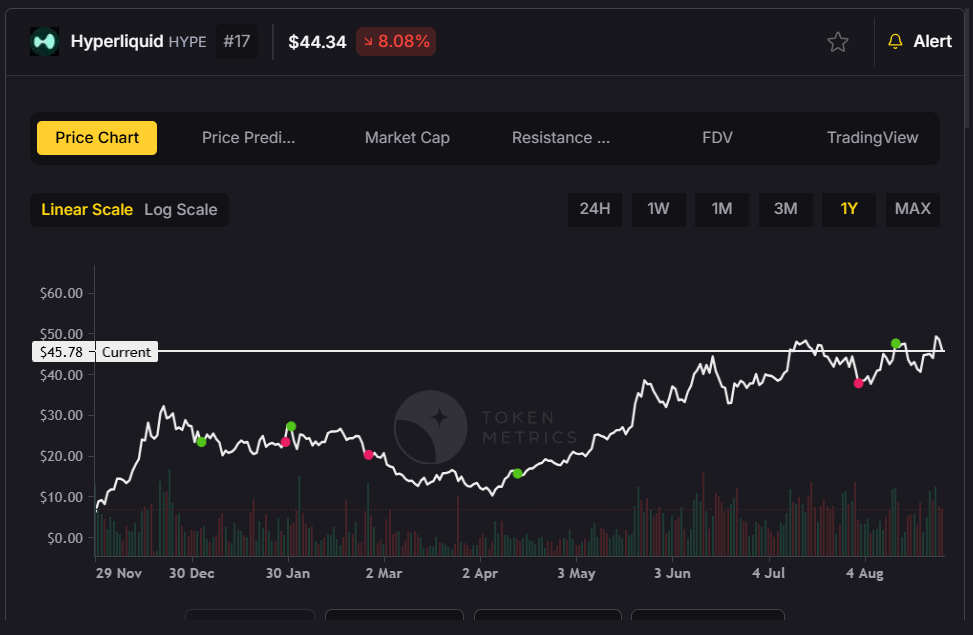
Understanding APIs: A Clear Definition

APIs power modern software by letting systems communicate without exposing internal details. Whether you're building an AI agent, integrating price feeds for analytics, or connecting wallets, understanding the core concept of an "API" — and the practical rules around using one — is essential. This article defines what an API is, explains common types, highlights evaluation criteria, and outlines best practices for secure, maintainable integrations.
What an API Means: A Practical Definition
API stands for Application Programming Interface. At its simplest, an API is a contract: a set of rules that lets one software component request data or services from another. The contract specifies available endpoints (or methods), required inputs, expected outputs, authentication requirements, and error semantics. APIs abstract implementation details so consumers can depend on a stable surface rather than internal code.
Think of an API as a menu in a restaurant: the menu lists dishes (endpoints), describes ingredients (parameters), and sets expectations for what arrives at the table (responses). Consumers don’t need to know how the kitchen prepares the dishes — only how to place an order.
Common API Styles and When They Fit
APIs come in several architectural styles. The three most common today are:
- REST (Representational State Transfer): Resources are exposed via HTTP verbs (GET, POST, PUT, DELETE). REST APIs are simple, cacheable, and easy to test with standard web tooling.
- GraphQL: A query language that lets clients request exactly the fields they need. GraphQL reduces over- and under-fetching but introduces complexity on server-side resolvers and query depth control.
- RPC / WebSocket / gRPC: Remote Procedure Calls or streaming protocols suit high-performance or real-time needs. gRPC uses binary protocols for efficiency; WebSockets enable persistent bidirectional streams, useful for live updates.
Choosing a style depends on use case: REST for simple, cacheable resources; GraphQL for complex client-driven queries; gRPC/WebSocket for low-latency or streaming scenarios.
How to Read and Evaluate API Documentation
Documentation quality often determines integration time and reliability. When evaluating an API, check for:
- Clear endpoint descriptions: Inputs, outputs, HTTP methods, and expected status codes.
- Auth & rate-limit details: Supported authentication methods (API keys, OAuth), token lifecycle, and precise rate-limit rules.
- Example requests & responses: Copy‑paste examples in multiple languages make testing faster.
- SDKs and client libraries: Maintained SDKs reduce boilerplate and potential bugs.
- Changelog & versioning policy: How breaking changes are communicated and how long old versions are supported.
For crypto and market data APIs, also verify the latency SLAs, the freshness of on‑chain reads, and whether historical data is available in a form suitable for research or model training.
Security, Rate Limits, and Versioning Best Practices
APIs expose surface area; securing that surface is critical. Key practices include:
- Least-privilege keys: Issue scoped API keys or tokens that only grant necessary permissions.
- Use TLS: Always request and enforce encrypted transport (HTTPS) to protect credentials and payloads.
- Rate limit handling: Respect limit headers and implement retry/backoff logic to avoid throttling or IP bans.
- Versioning: Prefer URL or header-based versioning and design migrations so clients can opt-in to changes.
- Monitoring: Track error rates, latency, and unusual patterns that could indicate abuse or regressions.
Security and resilience are especially important in finance and crypto environments where integrity and availability directly affect analytics and automated systems.
APIs in AI and Crypto Workflows: Practical Steps
APIs are central to AI-driven research and crypto tooling. When integrating APIs into data pipelines or agent workflows, consider these steps:
- Map required data: determine fields, frequency, and freshness needs.
- Prototype with free or sandbox keys to validate endpoints and error handling.
- Instrument observability: log request IDs, latencies, and response codes to analyze performance.
- Design caching layers for non-sensitive data to reduce costs and improve latency.
- Establish rotation and revocation processes for keys to maintain security hygiene.
AI models and agents can benefit from structured, versioned APIs that provide deterministic responses; integrating dataset provenance and schema validation improves repeatability in experiments.
Build Smarter Crypto Apps & AI Agents with Token Metrics
Token Metrics provides real-time prices, trading signals, and on-chain insights all from one powerful API. Grab a Free API Key
Frequently Asked Questions
What is the simplest way to describe an API?
An API is an interface that defines how two software systems communicate. It lists available operations, required inputs, and expected outputs so developers can use services without understanding internal implementations.
How do REST and GraphQL differ?
REST exposes fixed resource endpoints and relies on HTTP semantics. GraphQL exposes a flexible query language letting clients fetch precise fields in one request. REST favors caching and simplicity; GraphQL favors efficiency for complex client queries.
What should I check before using a crypto data API?
Confirm data freshness, historical coverage, authentication methods, rate limits, and the provider’s documentation. Also verify uptime, SLA terms if relevant, and whether the API provides proof or verifiable on‑chain reads for critical use cases.
How do rate limits typically work?
Rate limits set a maximum number of requests per time window, often per API key or IP. Providers may return headers indicating remaining quota and reset time; implement exponential backoff and caching to stay within limits.
Can AI tools help evaluate APIs?
AI-driven research tools can summarize documentation, detect breaking changes, and suggest integration patterns. For provider-specific signals and token research, platforms like Token Metrics combine multiple data sources and models to support analysis workflows.
Disclaimer
This article is educational and informational only. It does not constitute financial, legal, or investment advice. Readers should perform independent research and consult qualified professionals before making decisions related to finances, trading, or technical integrations.

.svg)

Create Your Free Token Metrics Account

.png)




%201.svg)
%201.svg)


%201.svg)












.svg)




.png)